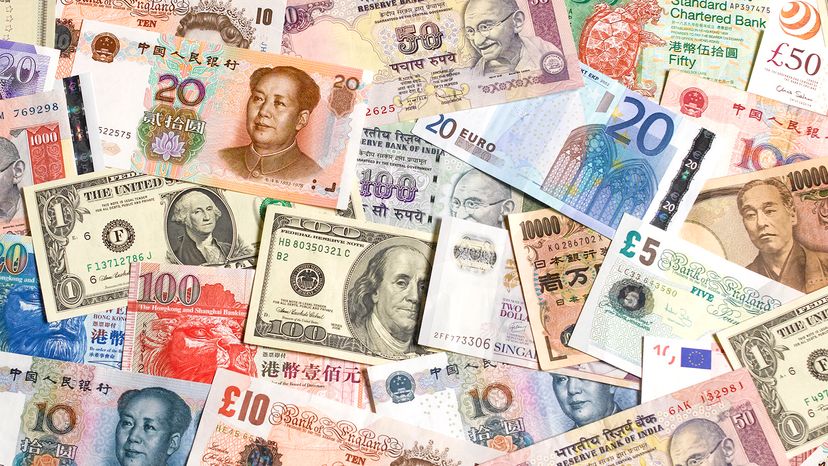The listing for the most valuable currency, it should be noted, is always going to be somewhat in flux. After all, exchange rates can vary daily, and economic stability isn't guaranteed anywhere. With that in mind, here are the most valuable currencies in the world at the time of publishing.
1. Kuwaiti Dinar (3.28 USD)
Coming out squarely on top is the Kuwaiti dinar, the national currency of Kuwait. For the past five years or so, the Kuwaiti dinar has been worth just over three U.S. dollars. This stability and high value has a lot to do with the fact that Kuwait is a small, rich country that exports a humongous amount of oil.
2. Bahraini Dinar (2.65 USD)
The No. 2 slot belongs to another rich Gulf state. In this case, as with Kuwait, crude oil is a major export, but Bahrain also exports raw aluminum and aluminum products such as wire. The Bahraini dinar is pegged to the U.S. dollar — and has been since 1986 — with 1 Bahraini dinar being worth 2.65 U.S. dollars.
3. Omani Rial (2.60 USD)
A single Omani rial is worth 2.60 U.S. dollars; like dinar, the currency is pegged to the U.S. dollar at a specific exchange rate. Once again, Oman is a Gulf state with a petroleum-based economy. Their oil and gas exports help ensure a steady, highly valued currency.
4. Jordanian Dinar (1.41 USD)
Jordan's official currency, the Jordanian dinar, is worth $1.41. It's been pegged to the U.S. dollar since 1950.
Unlike the the preceding countries on the list, Jordan isn't oil-rich. In fact, their economic growth hasn't been impressive for some time, and the country has a lot of debt. All the same, they have a diversified economy, with Jordanian exports ranging from calcium phosphates (critical for industrial chemistry and fertilizers) to jewelry.
5. Pound Sterling (1.31 USD)
For those who haven't been in London for tea and crumpets lately, the pound sterling, also called the British pound sterling, is the national currency of the United Kingdom.
Currently, you would need 1.31 U.S. dollars to get 1 pound, which is due to the U.K.'s large, diversified economy. They've also benefited from low inflation, which helps keep the pound sterling higher than the USD.
6. Gibraltar Pound (1.31 USD)
Gibraltar is a tiny overseas territory of the U.K., located on an island off the tip of Spain. Once a major port, it remains closely tied to the U.K., with the Gibraltar pound pegged to the pound sterling. A Gibraltar pound is worth 1.31 U.S. dollars.
7. Cayman Islands Dollar (1.20 USD)
You're probably familiar with the Cayman Islands as either a vacation spot or a place where rich people stash their money. Both of these attributes lead to a strong, stable economy, with a stable and valuable currency to match.
The Cayman Islands are mostly tax-free, which helps to attract foreign investment, especially in the financial services sector. A Cayman islands dollar is worth $1.20 and is pegged to the U.S. dollar.
8. Swiss Franc (1.18 USD)
The Swiss franc is another case of a small country with a relatively highly valued currency: 1 Swiss franc is equal to 1.18 U.S. dollars. As in the case of the Cayman Islands dollar, having a banking sector with a tradition of discretion helps keep the Swiss franc one of the most valuable and stable currencies worldwide.
They are also known as the gold hub of the world; most of the gold that is mined internationally travels through Switzerland, where it is refined into gold bullion, and also used in the manufacture of watches, one of Switzerland's major exports.
9. Euro (1.1 USD)
As the official currency of the European Union, and the second-most traded currency globally, the euro is both a valuable currency and a very popular one on the foreign exchange markets. The European Union, being an economic agglomeration of various European nation states, is an economic powerhouse, with a currency to match.
The euro is the second-largest reserve currency in the world. A euro is currently worth 1.1 U.S. dollars. The euro and the U.S. dollar together sit at the top of the world's major currency pairs, meaning they are the most frequently traded for each other.
10. United States Dollar (1 USD)
Finally, we arrive at the good old familiar U.S. dollar. You might be surprised to find the dollar so low on this list; sure, it's in the top 10, but only barely. The reasons for this are multitudinous and have to do with the sheer size and complexity of the U.S. economy.
The U.S. dollar is also the most-traded currency in the world, as well as the world's primary reserve currency. That means that almost all other major economies buy U.S. dollars to help keep their economies — and their own currencies — stable and competitive.
